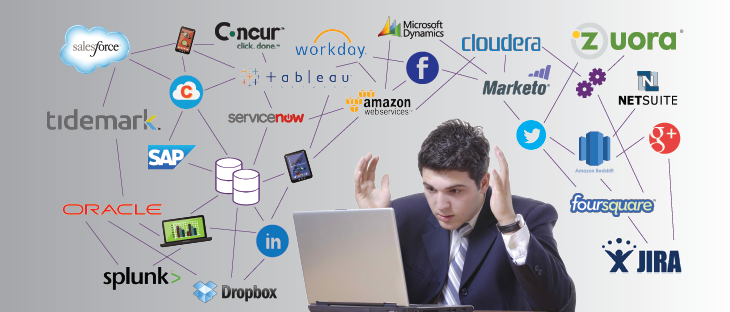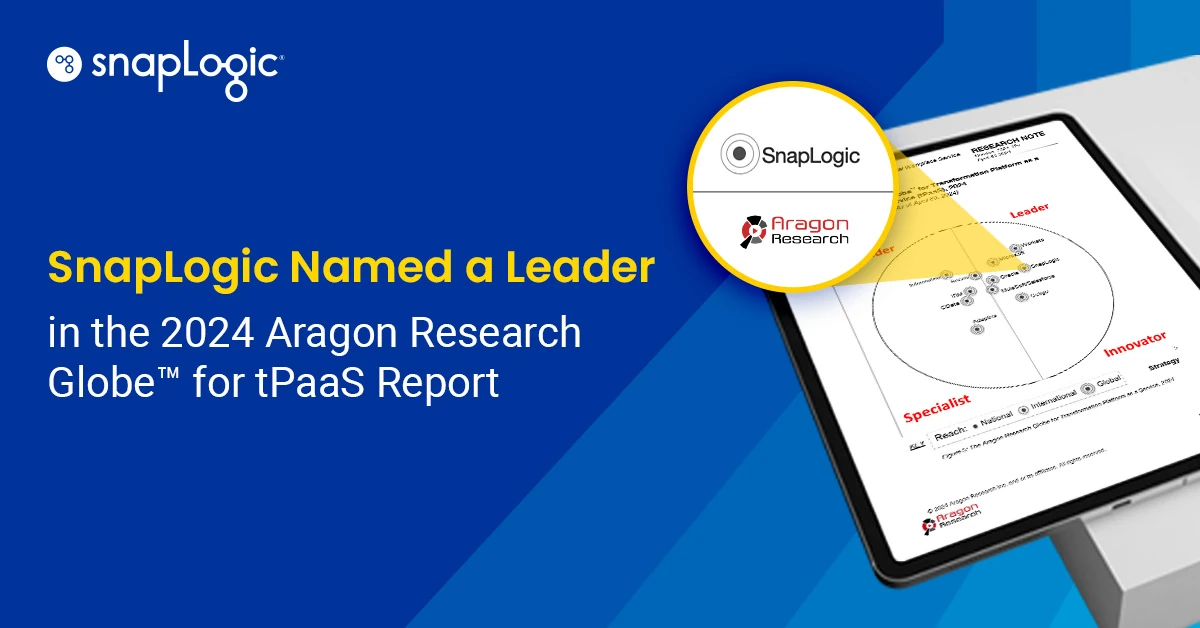Over the last few years I’ve had many conversations about the need for better cloud services integration (now referred to as iPaaS) with members of IT organizations (typically the team responsible for SaaS applications) and people in the line of business (often sales operations, but also marketing, finance, HR, analysts and administrators of SaaS applications like Salesforce or Workday). I started a blog on the topic in 2009 and wrote about the idea of an On Demand Data Warehouse in 2007.
In the early days of cloud services adoption, it was clear that the topic of data and application integration was seen as more of a cloud buzz-kill than a cloud enabler. But things have changed. IT organizations and the line of business (LOB) are now perfectly aligned when it comes to the overall cloud computing shift and strategy. SaaS silos have been eliminated and the dangers of a poor cloud integration strategy are well understood.
Or are they?
Here are 5 signs it might be time to re-think your cloud integration strategy:
1) You’re Struggling with the Integrator’s Dilemma: Your old on-premises tools can’t keep up with the world of social, mobile, analytics and cloud (SMAC). Legacy middleware technologies were conceptualized and built in the 1990s and were not designed to handle an IT ecosystem that expands beyond traditional confines of the firewall. Either built for moving large data sets in scheduled batches (ETL) or moving small volumes of data in real-time (EAI), neither technology is well-suited for this new world for unstructured information. To reform your cloud integration strategy, read this post about the Integrator’s Solution and this post about JSON and REST.
2) You Have Unintegrated Integration: You have multiple tools and teams for different styles of integration (application, process, data), not to mention hand-coding. The world of integration has been converging in the on-premises world for years. In the cloud world, it’s on the fast track. As we noted in this iPaaS announcement, Gartner had this to say about next-generation integration in their PaaS hype cycle:
“Compelling iPaaS value propositions for user organizations include the financial benefits (operating expenditures vs. capital expenditures) that are typical of cloud services, faster time to integration and greater ease of use compared with traditional integration middleware and the set of cohesive and integrated capabilities that were previously found in multiple discrete integration products.”
3) You Thought Cloud = API Utopia: All APIs are not created equally and having an open API does not mean easy on-going maintenance and integration. There’s no doubt that APIs are everywhere and have no doubt become a salient part of every cloud integration strategy, but one does not superannuate the other. In fact, in his Forbes review of our Spring 2014 release, Ben Kepes writes about the convergence of API management and integration noting: “All in all it’s an interesting release for the company and gives us a glimpse of what the future looks like for the broader integration space.” You can learn more about the API management features in the SnapLogic Integration Cloud Spring 2014 here.
4) You Still Have Swivel Chair Integration: Are you logging into multiple applications and spreadsheets to get a single view of customers and employees? Yes, it’s an old problem, but it simply hasn’t gone away. Cloud single sign on (SSO) solution providers like OneLogin and Okta do a great job allowing people to log in once, but if you’re a sales rep, for example, you want to go to one place to see all relevant customer activity including social media, support tickets and order history. This requires real-time integration. And when it comes to cloud analytics and forming a solid cloud integration strategy, you want to be able to dynamically assemble data from multiple sources to get relevant information and insight. This requires that “citizen integrators” can serve themselves. It requires broad cloud services and on-premises connectivity and it requires powerful data integration capabilities. Learn more about our Snaps here and the SnapLogic Integration Cloud user experience for “citizen integrator’s” here.
5) You’re Considering Going Back to On-Prem Due to Diminishing SaaS Returns: Does it seem that the more SaaS apps you deploy, the less adoption and ROI you’re getting? Silo’d SaaS inevitably leads to “SaaS Sprawl.” As summarized in this Cloud Computing Experts Forecast post, IDC predicts that, “over the 2013 to 2017 forecast period, public IT cloud services will have a compound annual growth rate [CAGR] of 23.5%, five times that of the IT industry as a whole and PaaS will lead IaaS and SaaS with a CAGR of 29.7%.” Clearly the demand for SaaS and PaaS is on the rise. It just makes sense. But the right approach to cloud services integration within a cloud integration strategy is being able to unlock the transformative potential of these investments. Integration guru David Linthicum has been an early and vocal advocate of this point. He noted in a 2011 article:
“The beauty — and the downside — of SaaS is that the businesspeople don’t need IT to establish accounts and to get up and running. IT has less work to do in the short term. But without integration, SaaS silos spring up, resulting in duplicate data, inaccurate reports, and ultimately, damaging data discrepancies….With SaaS in particular, you need a flexible integration solution, because both the source and target system interfaces change more frequently than those presented by traditional enterprise software.”
The good news is that cloud integration strategies have emerged as a hot cloud computing topic, often eclipsing security as the top barrier to adoption. Even better news is the pace of integration innovation that is coming from solution providers who aren’t bound by their legacy and are built to handle a variety of integration styles and data sources while running at cloud speed. Learn more about SnapLogic.










